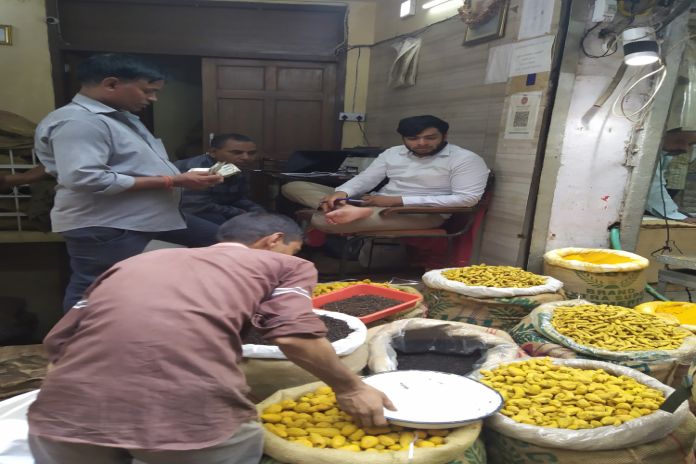By Monika Shifotoka
New radiation technology is being used in food irradiation, helping to make food safer, better and easier to trade worldwide, participants at the International Symposium on Food Safety and Control heard this week at the IAEA’s Vienna headquarters. The symposium provided a forum for food specialists to share ideas on cutting-edge research and innovation, including nuclear technologies in food and agriculture that can contribute to greater global food security and sustainable agricultural development.
The IAEA, in collaboration with the Food and Agriculture Organization of the United Nations (FAO), is pioneering advances in food irradiation technology. This includes increasing the use of irradiation to eliminate harmful bacteria in food and developing new soft-beam technology. It is part of a broader initiative to enhance global food safety, quality and trade. Coordinated research activities are benefiting countries globally, with notable achievements in countries like Vietnam, China, and the United States of America.
Food irradiation is a gentle and non-invasive technology that preserves the nutritional content, flavour and overall quality of food products. The amount of energy delivered can be tailored to bring about a beneficial change. Utilizing gamma photons, electron beams, or X-rays, this technique effectively eliminates harmful microbes and pests without compromising the food’s nutritional quality or sensory attributes. Food irradiation helps to extend the shelf life of perishable food items by reducing microbial contamination and inhibiting the growth of spoilage-causing bacteria.
Unlike other preservation methods that may alter the taste or texture of foods, irradiation maintains the products’ flavour, while ensuring that it remains safe for consumption. It is typically used to preserve the quality of high-value food items such as seafood, spices, exotic fruits and vegetables. The beams can also prevent pests from breeding, acting as a phytosanitary treatment to stop insect pests hidden in consignments of fruits and vegetables from infesting new territories through international trade.
One of the notable trends in the field is the shift towards machine source irradiation, a method that makes use of electricity to generate the beams and so has some practical advantages and economic benefits. Unlike traditional gamma irradiation, machine sources can be switched on and off, allowing for more controlled and efficient treatment processes. This technology addresses safety and security concerns associated with radioactive isotopes and complements existing capacities, broadening the scope of food irradiation applications.
“These advancements improve the efficiency and effectiveness of irradiating food, ensuring safety without compromising quality – underscoring our potential to significantly reduce chemical use in food preservation. Nuclear science and technology can provide innovative and practical solutions to achieve food security and enhance our well-being, ”said Carl Blackburn, Food Irradiation Specialist at the Joint FAO/IAEA Centre of Nuclear Techniques in Food and Agriculture.
The IAEA and the FAO assists countries to establish and expand food irradiation services, reducing food loss and waste. For instance, Vietnam has secured lucrative fresh fruit exports to the USA and Australia, emphasizing the economic impact of employing food irradiation technologies. The development of soft-beam technology, capable of treating food at the surface or near-surface level, showcases a promising direction for enhancing food quality and safety, particularly for surface-sensitive products like whole shell eggs, raw cuts of meat and spices.
This technology enables countries to have unique products and market access to the USA, as well as tap into new foreign currencies, said Professor Suresh Pillai, Director of the National Center for Electron Beam Research at Texas A&M University. It also provides the USA population with access to fruits they will not have access to otherwise, he said.
Collaborative research initiatives, such as those conducted at Tsinghua University in China and Texas A&M University in the USA, are leading the way in optimizing irradiation processes and developing novel applications for food safety. These efforts highlight the potential of machine source irradiation to transform the food industry, ensuring higher standards of cleanliness and extending the global reach of safe, high-quality food products. At the same time, it minimizes food loss, prevents foodborne illnesses, and facilitates international trade in food commodities, through coordinated research efforts, and implementation of innovative irradiation techniques.
The IAEA and the FAO aim to strengthen Member States’ national capacities in applying irradiation for food safety and quality as well as to phytosanitary security. The two organizations also work closely with the International Plant Protection Convention (IPPC) and the Codex Alimentarius Commission to harmonize worldwide irradiation standards.
The IAEA and FAO launched a flagship Atoms4Food Initiative last year to expand the use of innovative nuclear techniques to enhance agricultural productivity, reduce food losses, ensure food safety, improve nutrition, and adapt to the challenges of climate change.
Source: IAEA News





